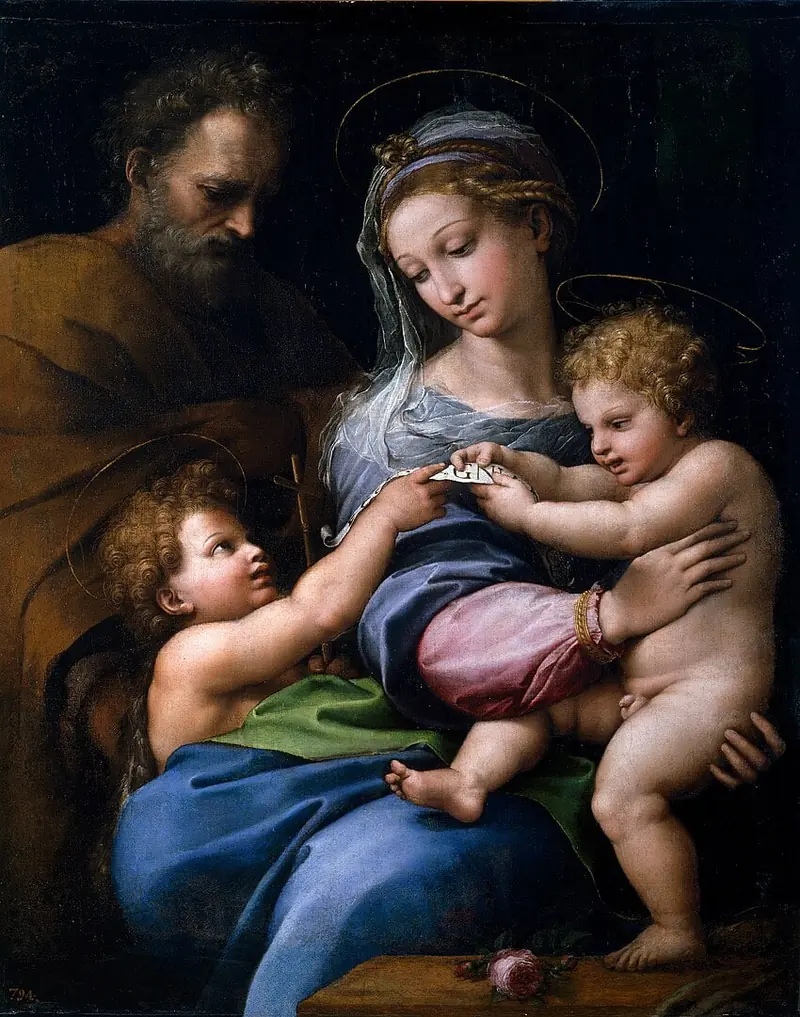
It’s a well-known fact that famous artists often had large groups of students who assisted them in creating their masterpieces. Therefore, this news is noteworthy not just because of the assistant’s involvement in the painting, but due to the remarkable advancements in new technology.
The painting “Madonna with the Rose” (1518) by the renowned Renaissance artist Raphael Santi is currently on display at the Prado Museum in Madrid. The artwork depicts the Virgin Mary holding the infant Jesus, along with Saint Joseph and the infant John the Baptist.
Since the 19th century, art historians have debated the authorship of certain details in the painting. Notably, art historian Johann David Passavant suggested that other artists may have contributed to the creation of “Madonna with the Rose.” Now, British researchers have decided to settle these disputes using artificial intelligence.
What the Researchers Discovered
Professor Hasan Ugail, director of the Center for Visual Computing and Intelligent Systems at the University of Bradford, developed an astonishing algorithm. By scanning the brush strokes in the finest details of the canvas, he can identify the authenticity of Raphael’s works with 98 percent accuracy, as reported by the Daily Mail.

According to the AI’s verdict, the majority of the painting was created by Raphael. However, the face of Joseph in the upper left corner belongs to another artist. While some experts believed that the rose and the lower part of the canvas might also have been painted by someone else, the AI analysis showed otherwise.
Interestingly, art connoisseurs have long noted that Joseph appears somewhat out of place in this scene, as if he were painted later. Experts have speculated that this character may not have been part of the artist’s original concept.
The AI learned to recognize the authenticity of Raphael’s paintings by studying 49 of his works. “We used images of Raphael’s paintings to train the computer to recognize his style in great detail through brush strokes, color palettes, shades, and every aspect of the work,” Professor Ugail explained. According to him, the computer sees the painting at a much deeper level than the human eye, literally at a microscopic level.
Potential authors of the image of Joseph could be Raphael’s students—Giulio Romano or Gianfrancesco Penni—who are now widely known for their own works.
Although the AI can accurately identify Raphael’s paintings, researchers say their system cannot be used as the sole tool for authentication. Nevertheless, the results of the team’s work represent a step forward in improving overall authentication protocols, summarized study author David Stork from Stanford University.
The findings of the research were published in the journal Heritage Science.

